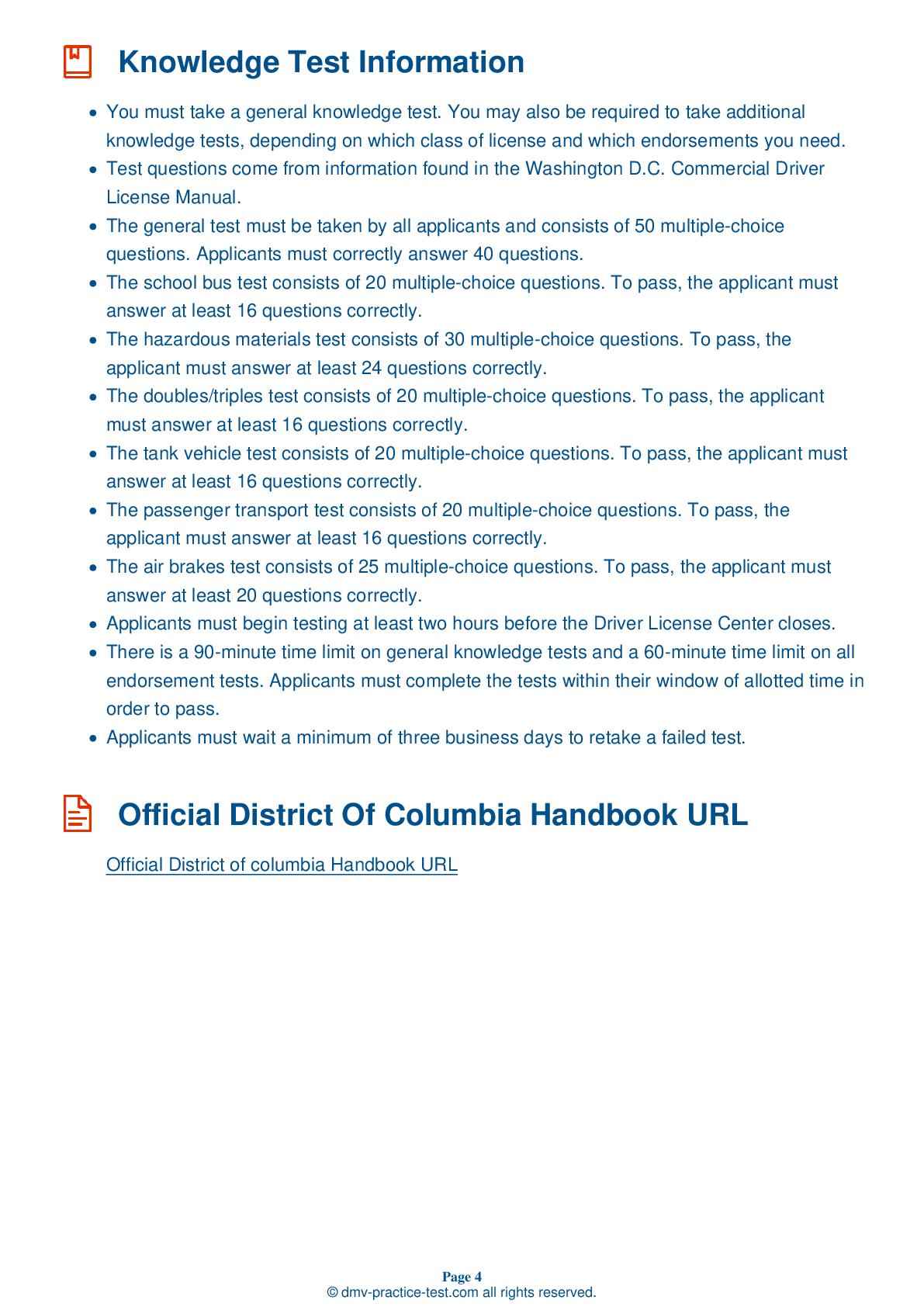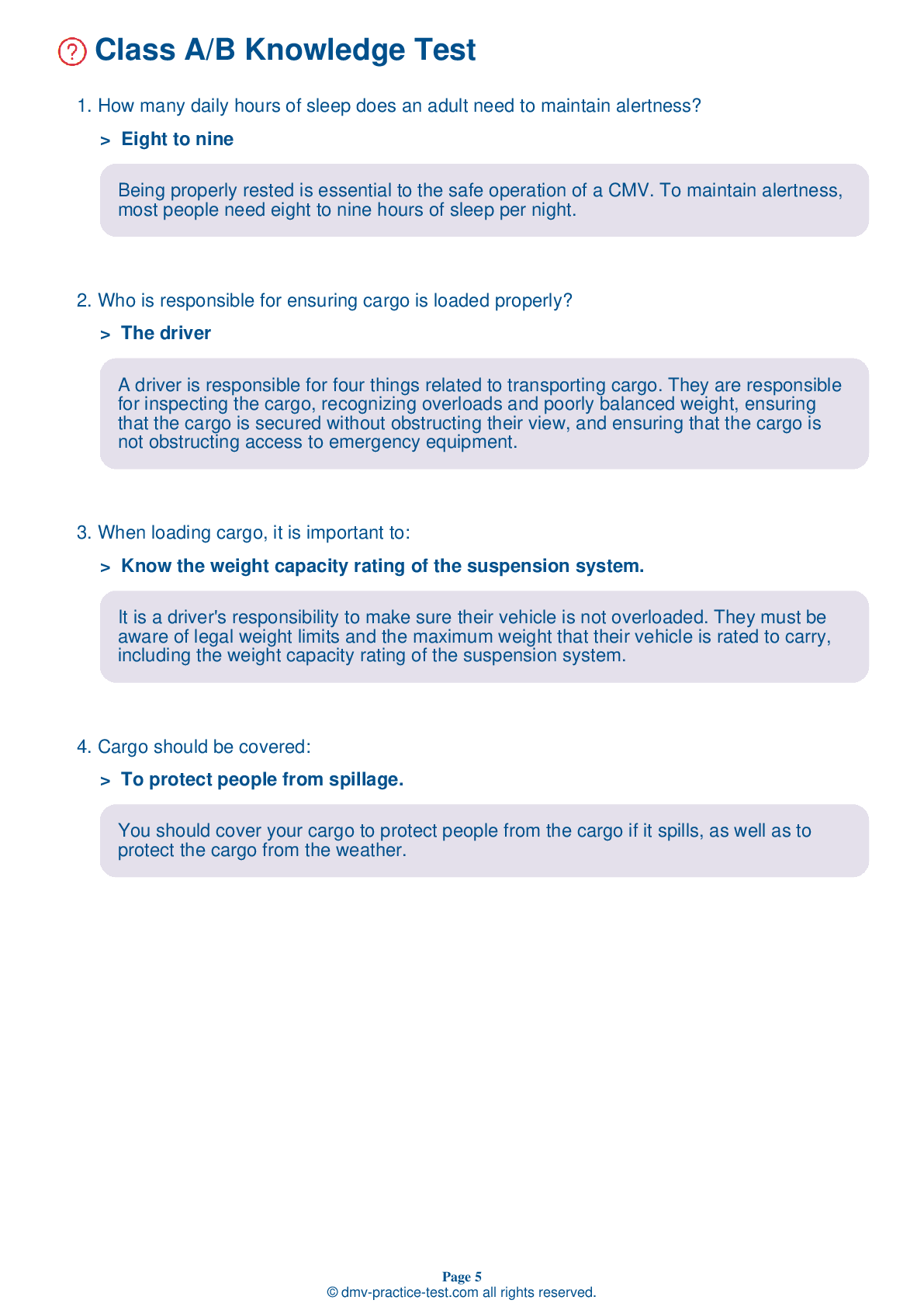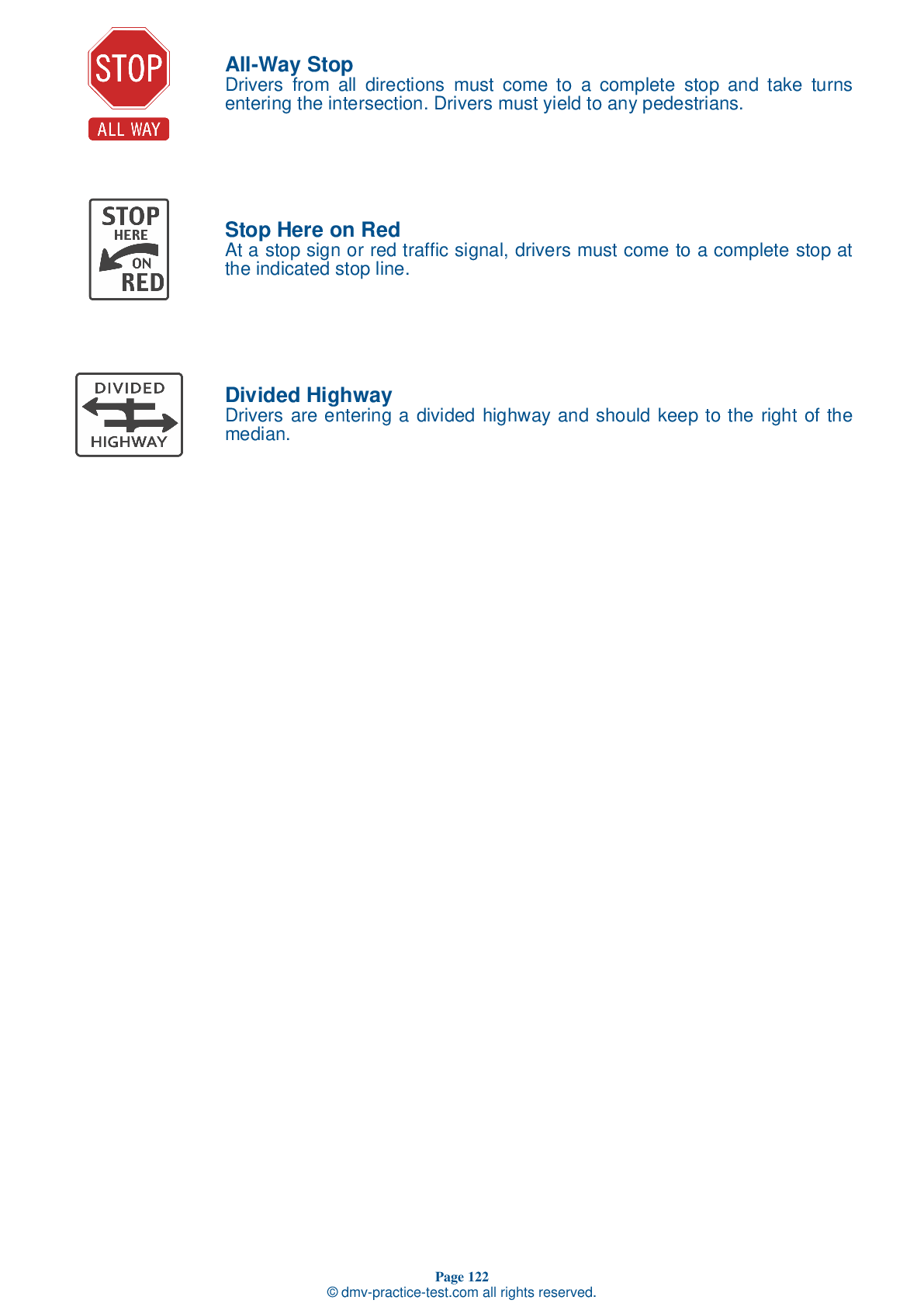Combination #2
Combination Vehicles Practice Test | District Of Columbia 2025 #2 Page 2 of 3
Train for FREE online with our District Of Columbia CDL combination vehicle test. The official exam test consists of several obligatory parts, with all of them checking your knowledge of different blocks of road rules. If you need to obtain a DC combination license in 2025, practice as much as possible. Free sample tests published on our website will help you check and improve your knowledge and boost your grades. Please bear in mind that DMV requirements for issuing a combination license may vary from state to state.
20
16
20
8 . When a combination vehicle goes around a corner:
It is acceptable for street signs to be knocked over if they are too close to the road.
When a vehicle goes around a corner, the rear wheels follow a different path than the front wheels. This is called off-tracking. This effect is especially pronounced on vehicles with trailers.
9 . Rollovers happen when:
ABS is working effectively.
Rollovers happen when a vehicle is driven too fast. To reduce the risk of rollover, make sure the weight of cargo is loaded low to the ground, and that you take turns and curves slowly.
10 . Failure to keep the fifth wheel plate properly greased could:
Affect the lights.
Failure to keep the fifth wheel plate properly lubricated can create friction between the tractor and trailer, causing steering problems.
11 . Push in the trailer air supply control to:
Supply the trailer with air.
Push in the trailer air supply control to supply the trailer with air. Pull out the trailer air supply control to turn off the air supply and activate the emergency brakes.
12 . What can the “crack-the-whip” effect do?
Make trucks decelerate.
The "crack-the-whip" effect can cause a trailer to turn over during a lane change. To avoid this phenomenon, drivers should make lane changes at slow, safe speeds.
13 . Having ABS on only one axle:
Will cause extra strain on the other axles.
Having an Anti-Lock Braking System (ABS) on only the trailer, or even on just one axle, will still provide a driver with additional control over the trailer when braking.
14 . When glad hands are coupled, the seals should be pressed together at an angle of:
90 degrees.
When coupling, be sure to couple the proper glad hands. When glad hands are connected, the seals should be pressed together at a 90-degree angle.
2025 District Of Columbia | Frequently Asked Questions
To secure a CDL Bus endorsement in the District of Columbia, you must first have a valid Commercial Driver's License (CDL). Then, you'll need to pass the Passenger Vehicles endorsement test. This includes a written knowledge test and a skills test in a vehicle similar to the one you'll be driving. You may also need to complete additional training.
To obtain a CDL Bus license in the District of Columbia, you must first have a valid driver's license. You'll then need to pass a general knowledge test, a passenger transport test, and a skills test which includes pre-trip vehicle inspection, basic vehicle control, and on-road driving. You must also provide medical certification and pass a background check.
Yes, specific training is necessary for a CDL Bus endorsement in the District of Columbia. This training typically covers topics like safe driving practices, emergency procedures, passenger management, and specific skills related to driving a bus. Additionally, you'll need to pass both a written test and a skills test demonstrating your knowledge and abilities.
CDL Bus licenses fall under Class A, B, or C depending on the vehicle's size and capacity. Class A is for combination vehicles over 26,001 pounds, Class B is for single vehicles over 26,001 pounds, and Class C is for vehicles designed to transport 16 or more passengers. Each class requires a different skills test.
No, you cannot use your personal vehicle for the CDL Bus driving test in the District of Columbia. The vehicle you use must match the class of CDL you are applying for. Therefore, you need to use a commercial bus for your test if you're seeking a bus endorsement. This ensures that you can handle the specific type of vehicle safely.
During the CDL Bus driving test in the District of Columbia, your ability to safely operate the vehicle is evaluated. This includes skills like pre-trip vehicle inspection, backing up, parallel parking, docking in an alley, making right and left turns, merging into traffic, maintaining appropriate speeds, and following safety procedures for loading and unloading passengers.
Yes, additional medical prerequisites are essential for a CDL Bus endorsement in the District of Columbia. Applicants must pass a Department of Transportation (DOT) physical examination by a certified medical examiner. This exam ensures you're physically capable of operating a commercial vehicle safely, checking aspects like vision, hearing, and overall physical health.
No, it's not permissible to transport passengers without a valid CDL Bus endorsement in the District of Columbia. The law requires anyone driving a commercial vehicle designed to carry 16 or more passengers, including the driver, to have a commercial driver's license with a passenger (P) endorsement. Driving without the correct endorsement could result in fines and penalties.
Yes, a CDL Bus endorsement can be added to your existing CDL in the District of Columbia. This requires passing a knowledge test and a skills test in a vehicle representative of the class of bus you wish to drive. Once you pass these tests, the endorsement can be added to your current license without needing a new one.
Yes, there are restrictions for drivers with a CDL Bus endorsement in the District of Columbia. These may include limitations related to the number of passengers, vehicle size, and cargo type. Additionally, bus drivers must comply with hours-of-service regulations, maintain a clean driving record, and pass regular drug and alcohol screenings. Violations can lead to endorsement suspension or revocation.



